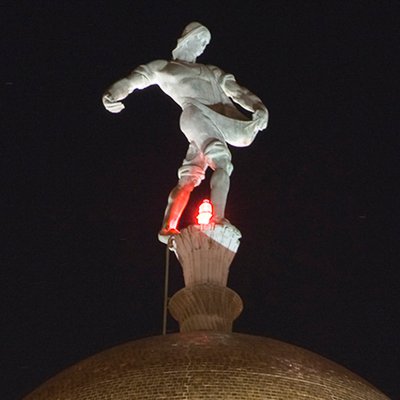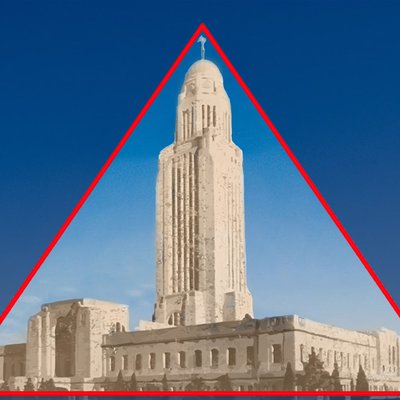CH 1
Overall Building
The Tower and the Plains
Take a Virtual Tour of the State Capitol. Click HERE to take an overall view of Nebraska's Beautiful Capitol.
The Sower and his pedestal were created in New York. They were shipped to Nebraska in an open railroad car.
[embed video: NE State Capitol - Sower.mp4] The Sower made his journey to the top in two stages. First, thousands gathered to watch as the Sower was hauled up to the fifteenth floor. He was stored there temporarily while the steel structure of the dome and pedestal were prepared. People got permission from the contractor to climb the tower stairs and visit the statue. When the structure was ready, the Sower was installed on the top.
A railroad line had been built that led right to the construction site. It was nicknamed the "Capitol and H (for H Street) Line" and it was the only state-owned railroad in Nebraska history.
sources: "Building a landmark: The Capitol of Nebraska", by Charles Fowler;
"Nebraska Moments: Glimpses of Nebraska's Past", by Donald R. Hickey
Sower stands on a pedestal of wheat and corn so his full form can be
seen from anywhere outside the Capitol, even up close to the base of the
Capitol where the dome would hide him.
Why do you think they put agricultural products on the pedestal?
The red light at the Sower’s feet, which protects the Capitol from air planes, is really a plain 200 watt light bulb inside a red glass case. The state hires a special worker to climb out and change it.
Would you like that job? Wow!

What do thunder and lightning come with?
That’s right—rain!
Why would the designers of the Capitol want rain to be so close to the wheat and corn on the pedestal base?
The cornerstone of the second Capitol (The Capitol you see today is the Nebraska’s third Capitol!) is beside the cornerstone for Bertram Goodhue's third Nebraska State Capitol. You can find both cornerstones at the northeast corner outside the Capitol.
Our state motto is on the east face of the cornerstone, and the north side of the cornerstone includes the date November 11, 1922 and tells you the Capitol is
"Dedicated to the Memory of Those Who Fell in the Service of Their Country"
Can you picture imaginary lines from its base to the top of its tower?
Now can you see the pyramid?
Pyramids were used in ancient Egypt as memorials to kings or pharaohs.
The Capitol is a memorial to fallen soldiers. Go to the West Façade to find out more about the Capitol as a memorial. The Capitol is one of our state’s important landmarks.
Why do you think the builders of the Capitol tried to make it a landmark instead of just a building? What are the landmarks in your area?
Why don’t you identify and draw them!
Let's Play a Game: Sow What?
Try "planting" these seeds to see what grows in Nebraska. If it doesn’t belong here, plant it someplace else!


















